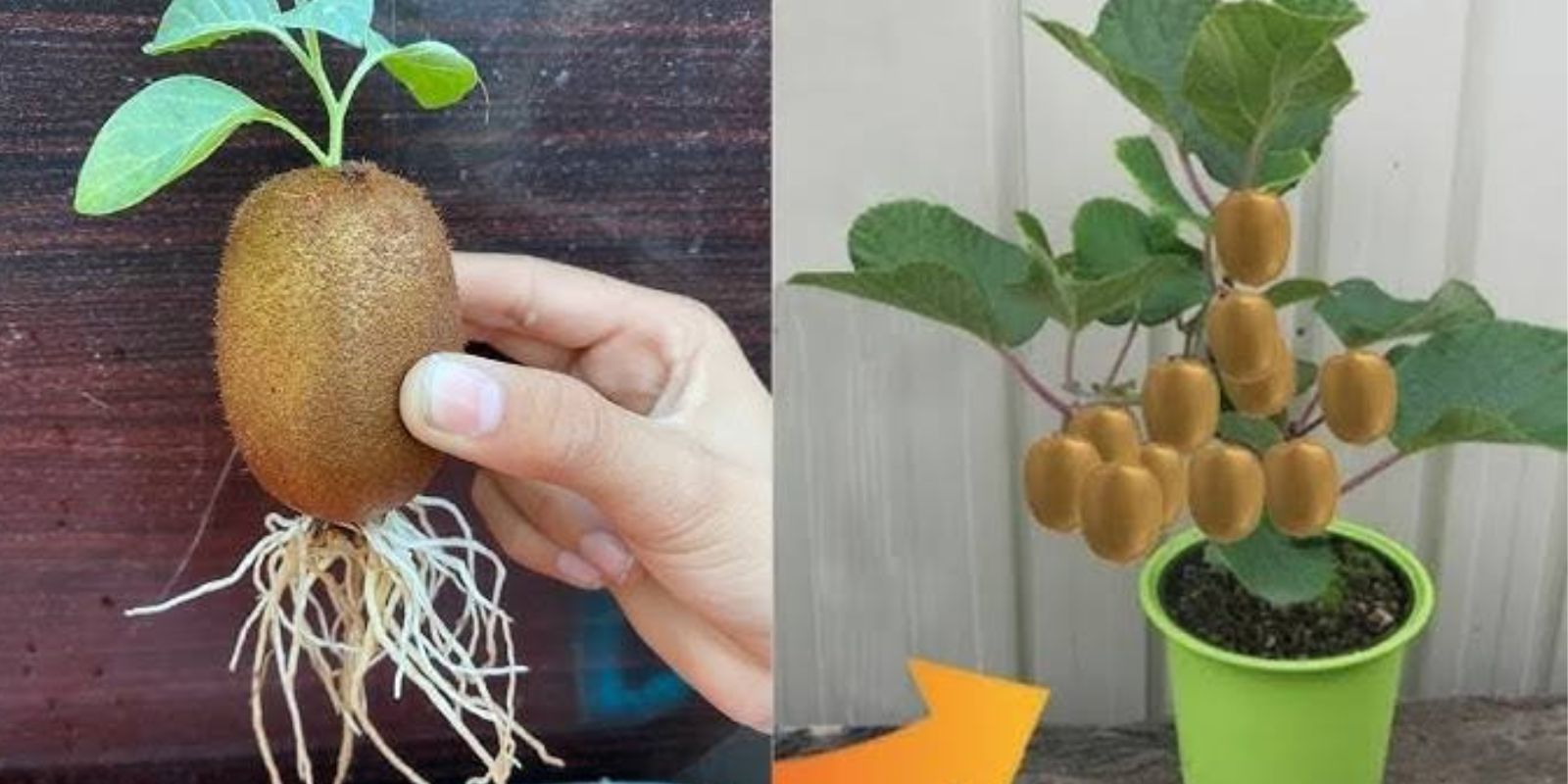Kiwis are not only delicious and packed with nutrients, but they also make for a fascinating addition to your home garden. Even if you don’t have a large outdoor space, growing kiwi in containers is an excellent way to enjoy homegrown fruits. With the right approach and care, you can transform store-bought kiwi seeds into thriving plants. This guide will take you through each step of the process.
1. Why Grow Kiwi at Home?
Growing kiwi at home allows you to enjoy fresh, organic fruits while adding an exotic touch to your garden. Kiwi vines are attractive and can double as ornamental plants, especially when trained onto trellises. By using store-bought kiwis, you not only save money but also gain the satisfaction of cultivating a fruit plant from scratch.
2. Selecting the Right Kiwi Variety
There are two main types of kiwi plants:
- Hardy Kiwis (Actinidia arguta): These varieties are cold-tolerant and compact, making them ideal for container gardening.
- Self-Pollinating Kiwis: Varieties like ‘Issai’ are great for small spaces as they don’t require both male and female plants for pollination.
If you’re growing from seeds, be aware that the plants may take several years to fruit and might need both male and female plants for pollination. Alternatively, you can purchase a grafted plant for quicker results.
3. Preparing the Seeds from Store-Bought Kiwi
To grow kiwi from store-bought fruit:
- Extract Seeds: Scoop out the seeds from a ripe kiwi and rinse them thoroughly to remove the pulp.
- Dry Seeds: Spread the seeds on a paper towel and let them dry for 1-2 days.
- Stratification: To improve germination, place the seeds in a damp paper towel inside a plastic bag and refrigerate for 2-3 weeks.
- Planting: Sow the seeds in seed-starting trays filled with a light potting mix. Cover lightly with soil and keep the tray in a warm, bright location.
4. Choosing the Right Container
Kiwi plants require plenty of room for their roots to grow. Select a container that is:
- At least 18-24 inches deep.
- Equipped with drainage holes to prevent waterlogging.
- Made of durable materials like plastic or terracotta.
For optimal results, start with a smaller pot for seedlings and transplant them to larger containers as they grow.
5. Soil and Fertilizer Requirements
Kiwi plants thrive in well-draining, nutrient-rich soil. Here’s how to prepare the perfect mix:
- Use a combination of loamy soil, compost, and sand for proper aeration.
- Maintain a slightly acidic pH (5.5-7.0).
- Fertilize with a balanced, slow-release fertilizer during the growing season to support healthy growth.
6. Providing Adequate Sunlight and Temperature
Kiwis love sunlight! Place your container in a spot that receives at least 6-8 hours of direct sunlight daily.
- Temperature: Kiwi plants prefer moderate climates. Protect them from frost during winter by moving the container indoors or covering the plant with a frost blanket.
- Indoor Growing: If growing indoors, ensure the plant gets bright, indirect light and maintain humidity with a humidifier or misting.
7. Watering and Humidity Management
Consistent moisture is key for healthy kiwi plants, but overwatering can lead to root rot.
- Water the plant deeply once the top inch of soil feels dry.
- Increase watering frequency during hot weather but avoid soggy soil.
- If growing indoors, maintain moderate humidity by misting the leaves or placing a tray of water near the plant.
8. Training and Pruning Kiwi Vines
Kiwi plants are vigorous climbers that need support to grow properly.
- Support Structures: Use a trellis, fence, or arbor to train the vines. Secure the stems gently with garden ties as they grow.
- Pruning:
- In the first year, focus on establishing a strong trunk by removing side shoots.
- In subsequent years, prune back the vines to control growth and encourage fruiting. Remove up to 90% of the previous year’s growth to focus energy on fruit production.
9. Pollination Requirements
Most kiwi plants require both male and female plants for pollination. If you’re growing a non-self-pollinating variety, ensure you have at least one male plant for every 6-8 female plants.
- Hand Pollination: Use a small brush to transfer pollen from male flowers to female flowers for better fruit set.
10. Harvesting Kiwi Fruits
Kiwi fruits typically ripen in late summer to early fall. Here’s how to know when they’re ready:
- Taste Test: Harvest one fruit and check its sweetness.
- Firmness: The fruits should be firm but slightly soft when gently squeezed.
- Harvesting: Use clean, sharp shears to cut the fruits from the vine. Handle them gently to avoid bruising.
11. Managing Pests and Diseases
Common pests like aphids, spider mites, and scale insects can affect kiwi plants. Diseases like root rot and leaf spot may also occur if conditions are unfavorable.
- Organic Controls: Use neem oil or insecticidal soap to manage pests.
- Prevention: Ensure proper drainage and avoid overcrowding to reduce the risk of diseases.
12. Enjoying Your Homegrown Kiwis
Once harvested, you can enjoy kiwis fresh, add them to smoothies, or use them in desserts. Homegrown kiwis are more flavorful and rewarding than store-bought ones.
13. Tips for Success
- Start with a hardy, self-pollinating variety if you’re new to gardening.
- Be patient—kiwi plants can take several years to produce fruit, but the results are worth the wait.
- Regularly monitor the plant’s growth, adjusting care as needed.
Conclusion
Growing kiwi plants from store-bought fruit is a rewarding experience that combines patience, care, and a touch of creativity. By following these steps, you can enjoy the satisfaction of harvesting sweet, juicy kiwis right from your home garden. Whether you’re an urban gardener or simply looking to try something new, kiwi plants are a fantastic addition to any space.
Would you try growing kiwi at home? Share your gardening journey below!

